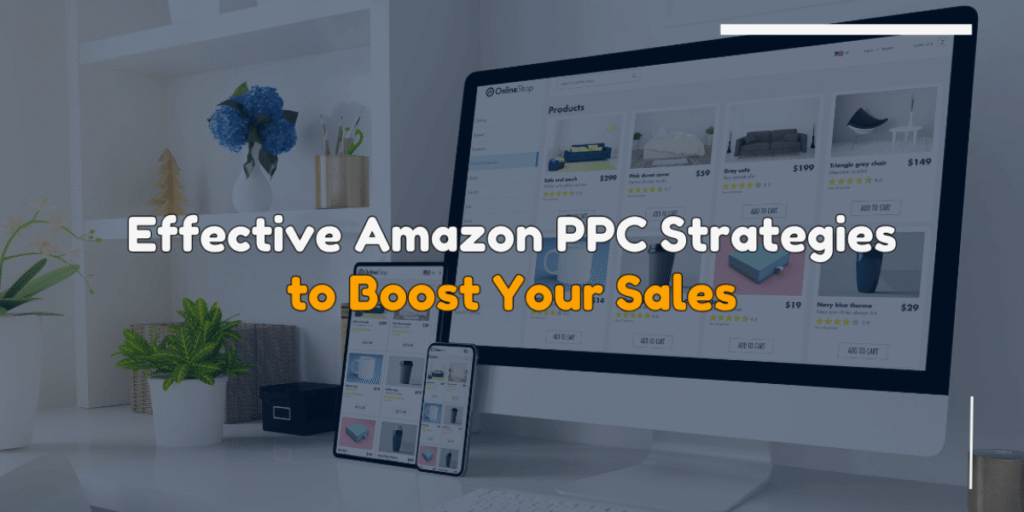Amazon is one of the most competitive marketplaces in the world, and if you’re not using Amazon PPC (Pay-Per-Click) ads strategically, you’re leaving money on the table. With thousands of sellers competing for visibility, simply listing your product isn’t enough. As an SEO expert, I can confidently say that leveraging advanced PPC techniques is crucial for achieving real growth and driving consistent sales.
Why Amazon PPC Matters in 2025
Amazon’s algorithm is smarter than ever, and with increasing competition, organic visibility alone won’t cut it. Paid advertising on Amazon provides sellers with the opportunity to place their products directly in front of high-intent customers. But not just any ad strategy will work. Success comes from continuous testing, optimization, and a deep understanding of Amazon’s ad ecosystem.
If you’re serious about increasing sales, improving visibility, and beating your competition, the following 19 Amazon PPC strategies will help you achieve it.
1. Start with a Solid Campaign Structure
The foundation of any successful PPC strategy begins with a well-structured campaign. Separate your campaigns by match type (broad, phrase, exact), product category, or performance goals. This helps in better budget allocation and makes data easier to analyze.
2. Use Automatic Campaigns for Discovery
Amazon’s automatic campaigns are a powerful tool for keyword discovery. Let Amazon do the initial work by identifying potential keywords you might not have considered. Use these campaigns to collect data, not to drive the bulk of your sales.
3. Mine Keywords from Automatic Campaigns
Once your automatic campaigns are running, dive into the search term reports. Identify high-converting keywords and move them into manual campaigns. This allows you to have more control over bidding and targeting.
4. Create Manual Campaigns for Control
Manual campaigns allow you to optimize and scale more efficiently. Use them to target keywords with known performance. Adjust bids based on conversion rates, click-through rates, and overall profitability.
5. Segment by Match Type in Manual Campaigns
Segmenting your campaigns by match type gives you better control over how ads are triggered. Use exact match for keywords with high conversion rates, phrase for moderate control, and broad match for discovery and reach.
6. Optimize Product Listings for Better PPC Results
Even the best ads won’t convert if your product listing isn’t compelling. Optimize your titles, bullet points, descriptions, and backend keywords to align with targeted ad keywords. This not only improves PPC performance but also organic rankings.
7. Leverage Negative Keywords to Prevent Wasted Spend
Adding negative keywords is essential to avoid irrelevant traffic. Regularly check your search term reports and filter out non-converting or irrelevant queries. This helps in refining your campaign and improving ROI.
8. Use Product Targeting Ads Strategically
Product targeting ads allow you to target competitor listings or complementary products. This is especially effective when your product has better pricing, reviews, or features.
9. Bid Aggressively on Branded Terms
Don’t let competitors steal your branded traffic. Protect your brand by bidding on your product names and brand-related keywords. This helps you dominate the SERPs and increases customer trust.
10. Target Competitor Keywords Cautiously
Targeting competitor keywords can be expensive but effective. If your product offers clear advantages, such as better reviews or pricing, this strategy can help you win over customers actively looking at competitor listings.
11. Test A/B Campaigns Continuously
Split testing isn’t just for landing pages. Run A/B tests for your ads, targeting, and bidding strategies to find the most effective combinations. Consistent testing leads to consistent improvement.
12. Use Dynamic Bidding Strategies
Amazon offers three bidding strategies: dynamic up and down, dynamic down only, and fixed bids. Test different strategies across campaigns to see what delivers the best return for your niche.
13. Allocate Budget Based on Performance
Don’t let low-performing campaigns drain your budget. Regularly audit your campaigns and shift your ad spend towards high-performing ads with strong ROAS (Return on Ad Spend).
14. Invest in Sponsored Brand Ads
Sponsored Brand Ads are excellent for top-of-funnel visibility and increasing brand recognition. They are ideal for brand owners looking to dominate the SERPs and establish a lasting impression.
15. Use Video Ads to Improve Engagement
Video content drives higher engagement, and Amazon Sponsored Brand Video Ads are proven to boost CTR and conversions. A well-crafted video showcasing your product’s benefits can set you apart instantly.
16. Monitor Placement Performance Reports
Amazon allows you to view performance by ad placement (top of search, product pages, etc.). Use this data to increase bids where you perform best and cut back where results are weaker.
17. Focus on Long-Tail Keywords
Long-tail keywords typically have lower competition and higher conversion rates. Incorporate them into your manual campaigns to attract more targeted traffic and improve your ACoS.
18. Track ACoS and TACoS Regularly
While ACoS (Advertising Cost of Sales) measures direct ad performance, TACoS (Total Advertising Cost of Sales) shows the impact of ads on your total revenue. Monitor both metrics to get a true sense of profitability and campaign health.
19. Never Stop Optimizing
Amazon PPC is not a “set it and forget it” strategy. Success comes from ongoing optimization, daily monitoring, and being willing to pivot your strategy as needed. Stay on top of trends, new ad features, and your competitors.
Conclusion
By implementing these 19 Amazon PPC strategies, you can significantly boost your visibility, increase sales, and build a more profitable Amazon business. Whether you’re a beginner or an experienced seller, consistent optimization and smart advertising can set your brand apart in the crowded Amazon marketplace.
To get personalized help or advanced PPC management, contact us today. At Amazon FBA Agency, we help brands grow faster with data-driven PPC strategies tailored for long-term success.
FAQs
What is the best Amazon PPC strategy for beginners?
Start with automatic campaigns to gather keyword data, then gradually move into manual campaigns with tighter targeting.
How often should I check my PPC campaigns?
Daily monitoring is ideal, especially for active campaigns. At a minimum, review performance weekly.
Are video ads worth it on Amazon?
Yes, video ads can significantly improve engagement and conversions, especially on mobile devices.
What’s the difference between ACoS and TACoS?
ACoS measures ad cost against ad revenue, while TACoS measures ad cost against total sales, giving you a fuller picture of profitability.
Should I bid on competitor keywords?
Yes, but strategically. Only target competitors if your product has a clear advantage, like better pricing, reviews, or features.




